Contents
1. Introduction to Consistency and Coherence
1.1 Consistency
1.2 Coherence
1.3 A Consistency and Coherence Quiz
1.4 What this Primer Does Not Do
2. Coherence Basics
2.1 Baseline System Model
2.2 The Problem: How Incoherence Could Possibly Occur
2.3 Defining Coherence
2.3.1 Maintaining the Coherence Invariants
2.3.2 The Granularity of Coherence
2.3.3 The Scope of Coherence
2.4 References
3. Memory Consistency Motivation and Sequential Consistency
3.1 Problems with Shared Memory Behavior
3.2 What Is a Memory Consistency Model?
3.3 Consistency vs. Coherence
3.4 Basic Idea of Sequential Consistency (SC)
3.5 A Little SC Formalism
3.6 Naive SC Implementations
3.7 A Basic SC Implementation with Cache Coherence
3.8 Optimized SC Implementations with Cache Coherence
3.9 Atomic Operations with SC
3.10 Putting it All Together: MIPS R10000
3.11 Further Reading Regarding SC
3.12 References
4. Total Store Order and the x86 Memory Model
4.1 Motivation for TSO/x86
4.2 Basic Idea of TSO/x86
4.3 A Little TSO Formalism and an x86 Conjecture
4.4 Implementing TSO/x86
4.5 Atomic Instructions and Fences with TSO
4.5.1 Atomic Instructions
4.5.2 Fences
4.6 Further Reading Regarding TSO
4.7 Comparing SC and TSO
4.8 References
5. Relaxed Memory Consistency
5.1 Motivation
5.1.1 Opportunities to Reorder Memory Operations
5.1.2 Opportunities to Exploit Reordering
5.2 An Example Relaxed Consistency Model (XC)
5.2.1 The Basic Idea of the XC Model
5.2.2 Examples Using Fences under XC
5.2.3 Formalizing XC
5.2.4 Examples Showing XC Operating Correctly
5.3 Implementing XC
5.3.1 Atomic Instructions with XC
5.3.2 Fences with XC
5.3.3 A Caveat
5.4 Sequential Consistency for Data-Race-Free Programs
5.5 Some Relaxed Model Concepts
5.5.1 Release Consistency
5.5.2 Causality and Write Atomicity
5.6 A Relaxed Memory Model Case Study: IBM Power
5.7 Further Reading and Commercial Relaxed Memory Models
5.7.1 Academic Literature
5.7.2 Commercial Models
5.8 Comparing Memory Models
5.8.1 How Do Relaxed Memory Models Relate to Each Other and TSO and SC?
5.8.2 How Good Are Relaxed Models?
5.9 High-Level Language Models
5.10 References
6. Coherence Protocols
6.1 The Big Picture
6.2 Specifying Coherence Protocols
6.3 Example of a Simple Coherence Protocol
6.4 Overview of Coherence Protocol Design Space
6.4.1 States
6.4.2 Transactions
6.4.3 Major Protocol Design Options
6.5 References
7. Snooping Coherence Protocols
7.1 Introduction to Snooping
7.2 Baseline Snooping Protocol
7.2.1 High-Level Protocol Specification
7.2.2 Simple Snooping System Model: Atomic Requests,Atomic Transactions
7.2.3 Baseline Snooping System Model: Non-Atomic Requests,Atomic Transactions
7.2.4 Running Example
7.2.5 Protocol Simplifications
7.3 Adding the Exclusive State
7.3.1 Motivation
7.3.2 Getting to the Exclusive State
7.3.3 High-Level Specification of Protocol
7.3.4 Detailed Specification
7.3.5 Running Example
7.4 Adding the Owned State
7.4.1 Motivation
7.4.2 High-Level Protocol Specification
7.4.3 Detailed Protocol Specification
7.4.4 Running Example
7.5 Non-Atomic Bus
7.5.1 Motivation
7.5.2 In-Order vs. Out-of-Order Responses
7.5.3 Non-Atomic System Model
7.5.4 An MSI Protocol with a Split-Transaction Bus
7.5.5 An Optimized, Non-Stalling MSI Protocol with a Split-Transaction Bus
7.6 Optimizations to the Bus Interconnection Network
7.6.1 Separate Non-Bus Network for Data Responses
7.6.2 Logical Bus for Coherence Requests
7.7 Case Studies
7.7.1 Sun Starfire E10000
7.7.2 IBM Power5
7.8 Discussion and the Future of Snooping
7.9 References
8. Directory Coherence Protocols
8.1 Introduction to Directory Protocols
8.2 Baseline Directory System
8.2.1 Directory System Model
8.2.2 High-level Protocol Specification
8.2.3 Avoiding Deadlock
8.2.4 Detailed Protocol Specification
8.2.5 Protocol Operation
8.2.6 Protocol Simplifications
8.3 Adding the Exclusive State
8.3.1 High-Level Protocol Specification
8.3.2 Detailed Protocol Specification
8.4 Adding the Owned State
8.4.1 High-Level Protocol Specification
8.4.2 Detailed Protocol Specification
8.5 Representing Directory State
8.5.1 Coarse Directory
8.5.2 Limited Pointer Directory
8.6 Directory Organization
8.6.1 Directory Cache Backed by DRAM
8.6.2 Inclusive Directory Caches
8.6.3 Null Directory Cache (with no backing store)
8.7 Performance and Scalability Optimizations
8.7.1 Distributed Directories
8.7.2 Non-Stalling Directory Protocols
8.7.3 Interconnection Networks without Point-to-Point Ordering
8.7.4 Silent vs. Non-Silent Evictions of Blocks in State S
8.8 Case Studies
8.8.1 SGI Origin 2000
8.8.2 Coherent HyperTransport
8.8.3 HyperTransport Assist
8.8.4 Intel QPI
8.9 Discussion and the Future of Directory Protocols
8.10 References
9. Advanced Topics in Coherence
9.1 System Models
9.1.1 Instruction Caches
9.1.2 Translation Lookaside Buffers (TLBs)
9.1.3 Virtual Caches
9.1.4 Write-Through Caches
9.1.5 Coherent Direct Memory Access (DMA)
9.1.6 Multi-Level Caches and Hierarchical Coherence Protocols
9.2 Performance Optimizations
9.2.1 Migratory Sharing Optimization
9.2.2 False Sharing Optimizations
9.3 Maintaining Liveness
9.3.1 Deadlock
9.3.2 Livelock
9.3.3 Starvation
9.4 Token Coherence
9.5 The Future of Coherence
9.6 References
Author Biographies
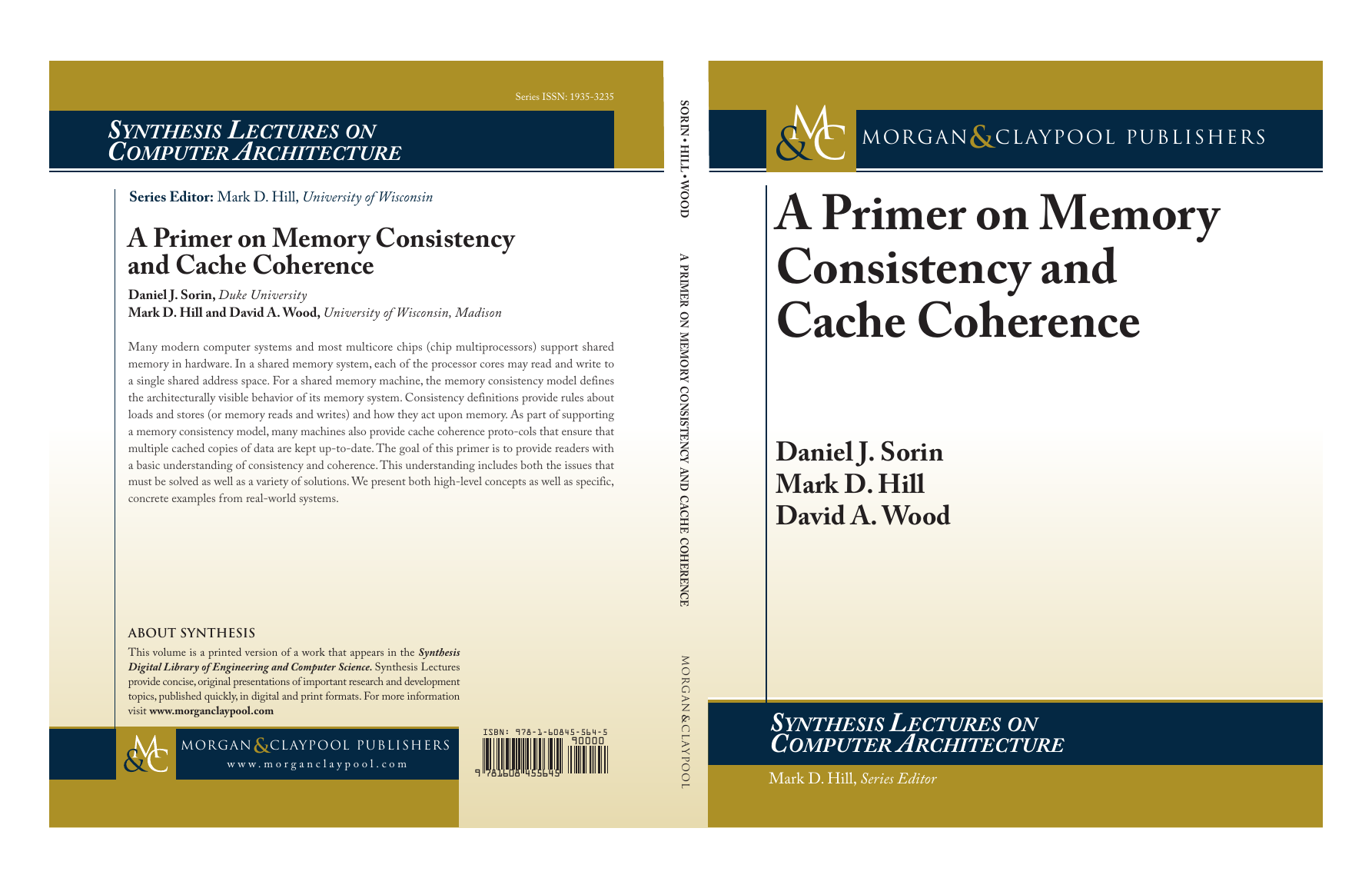

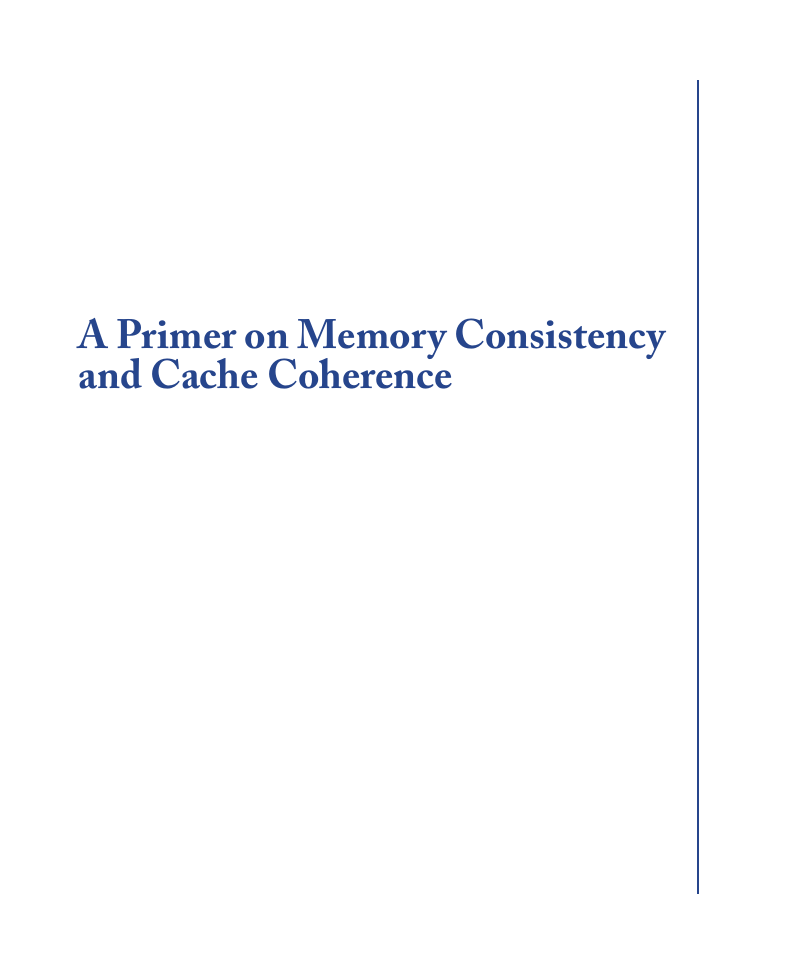
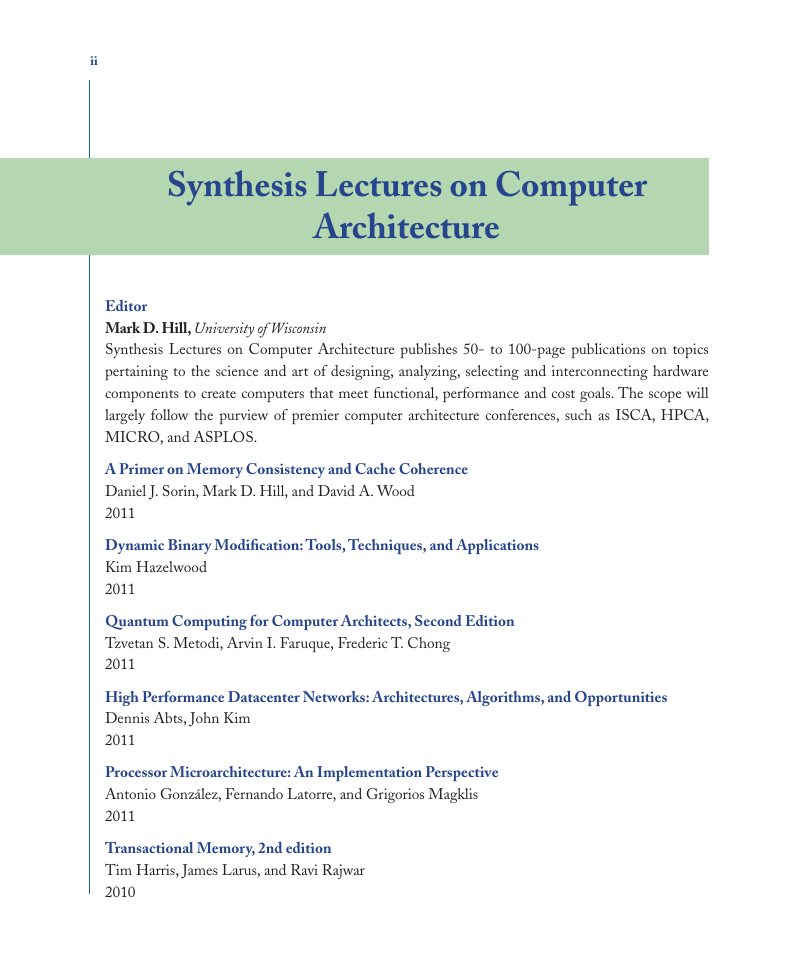

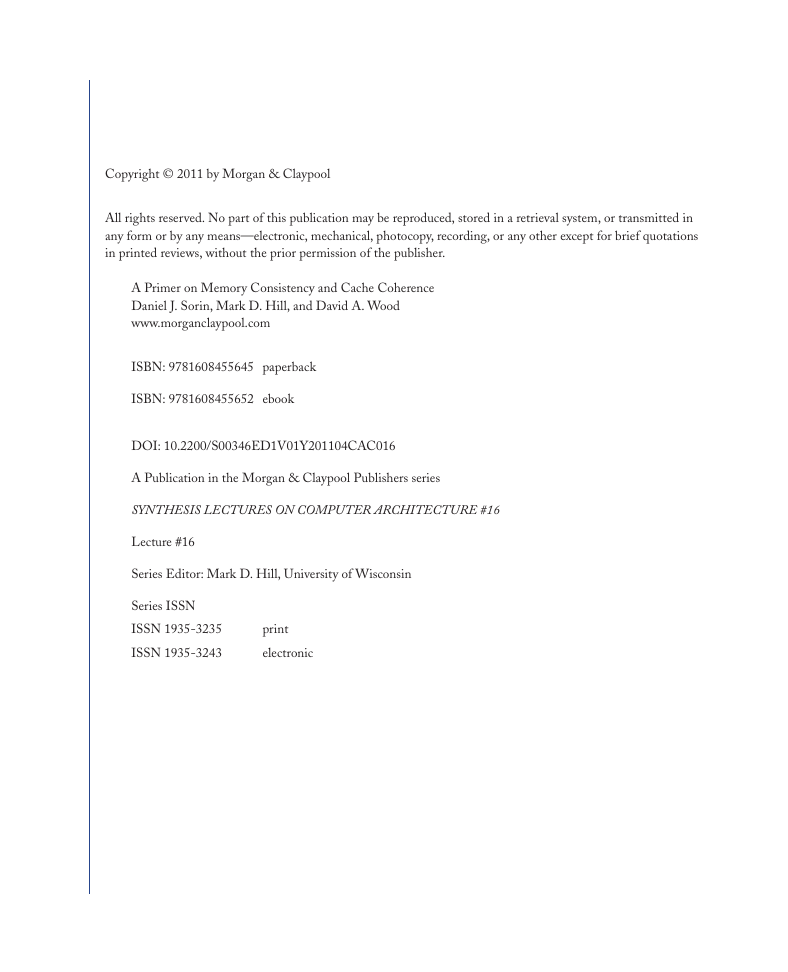
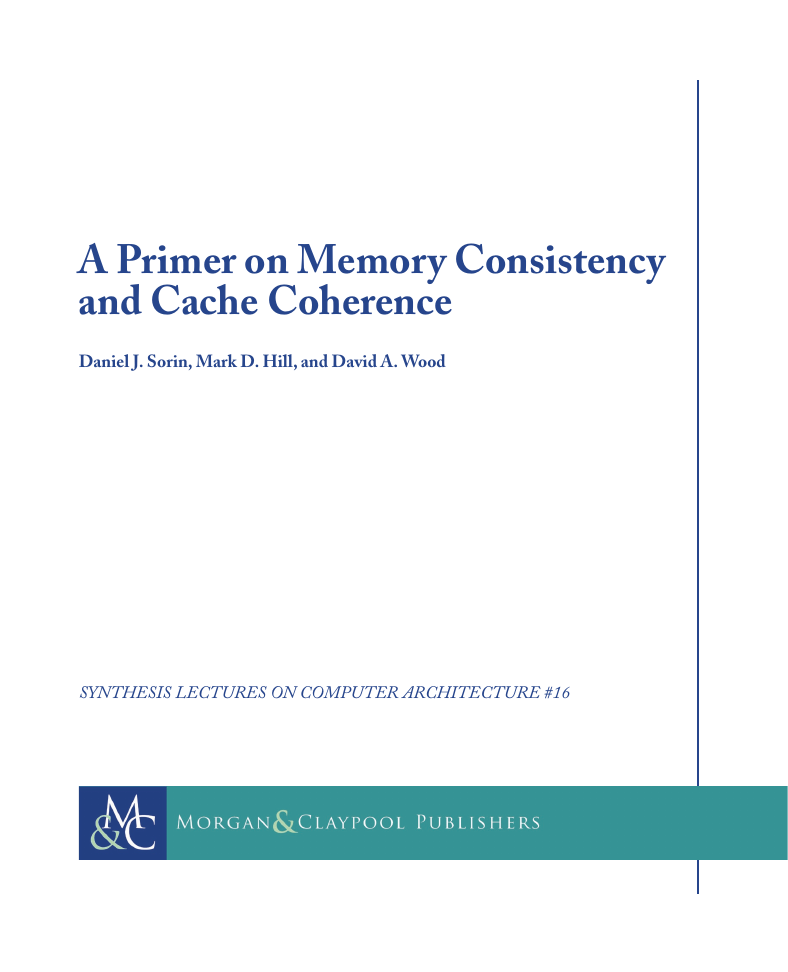









 2023年江西萍乡中考道德与法治真题及答案.doc
2023年江西萍乡中考道德与法治真题及答案.doc 2012年重庆南川中考生物真题及答案.doc
2012年重庆南川中考生物真题及答案.doc 2013年江西师范大学地理学综合及文艺理论基础考研真题.doc
2013年江西师范大学地理学综合及文艺理论基础考研真题.doc 2020年四川甘孜小升初语文真题及答案I卷.doc
2020年四川甘孜小升初语文真题及答案I卷.doc 2020年注册岩土工程师专业基础考试真题及答案.doc
2020年注册岩土工程师专业基础考试真题及答案.doc 2023-2024学年福建省厦门市九年级上学期数学月考试题及答案.doc
2023-2024学年福建省厦门市九年级上学期数学月考试题及答案.doc 2021-2022学年辽宁省沈阳市大东区九年级上学期语文期末试题及答案.doc
2021-2022学年辽宁省沈阳市大东区九年级上学期语文期末试题及答案.doc 2022-2023学年北京东城区初三第一学期物理期末试卷及答案.doc
2022-2023学年北京东城区初三第一学期物理期末试卷及答案.doc 2018上半年江西教师资格初中地理学科知识与教学能力真题及答案.doc
2018上半年江西教师资格初中地理学科知识与教学能力真题及答案.doc 2012年河北国家公务员申论考试真题及答案-省级.doc
2012年河北国家公务员申论考试真题及答案-省级.doc 2020-2021学年江苏省扬州市江都区邵樊片九年级上学期数学第一次质量检测试题及答案.doc
2020-2021学年江苏省扬州市江都区邵樊片九年级上学期数学第一次质量检测试题及答案.doc 2022下半年黑龙江教师资格证中学综合素质真题及答案.doc
2022下半年黑龙江教师资格证中学综合素质真题及答案.doc